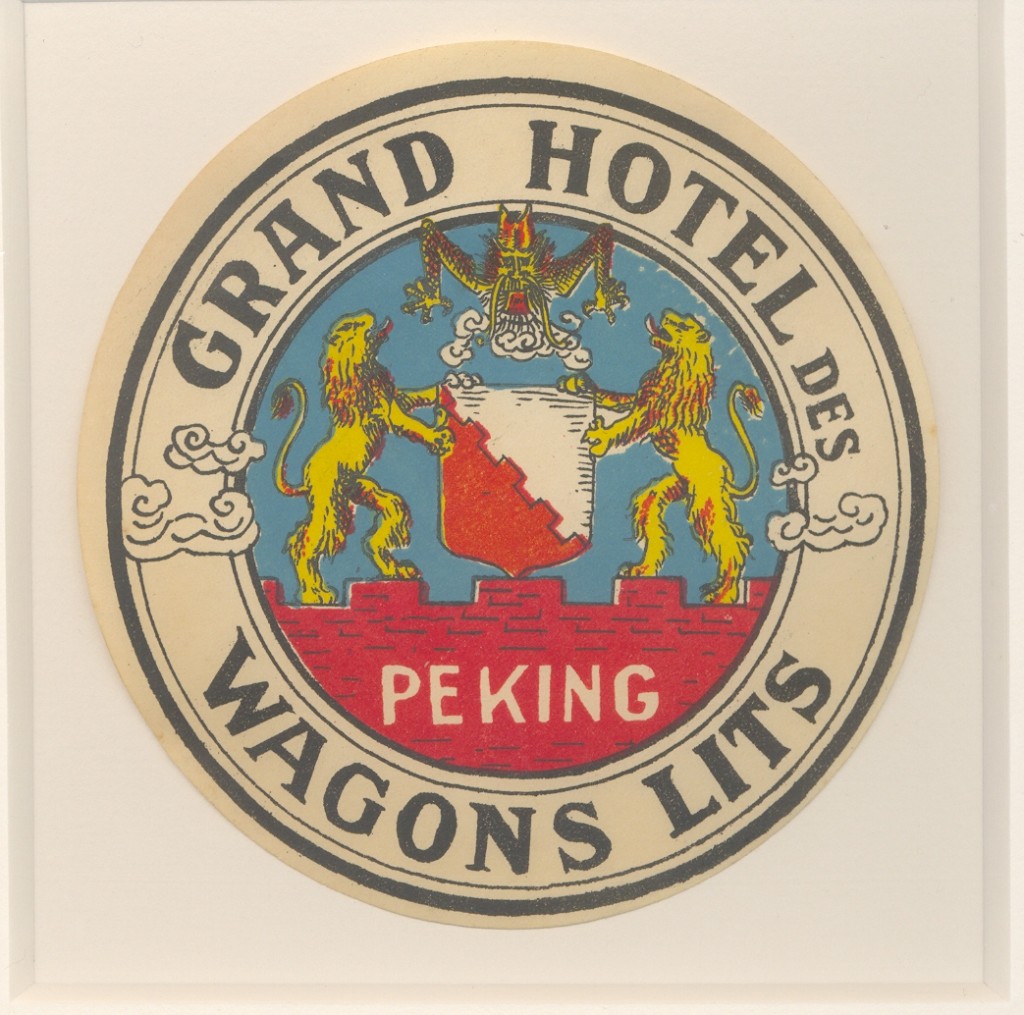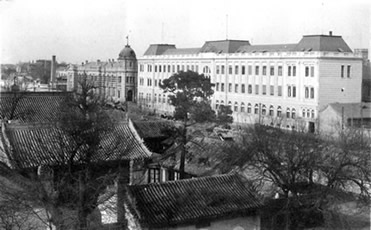Grand Hotels des Wagons Lits
Posted: January 27th, 2011 | 5 Comments »My forthcoming book Murder in Peking features quite a few scenes within and references to Peking’s old Grand Hotel des Wagons Lits in the Legation Quarter. The one my characters visited, slept, danced and drank in in 1937 was not the first Grand Hotel on the site – the first was built in 1905 in Flemish Gothic style, but soon proved to be too small and was replaced in 1914 by a larger building. It was, after the Peking Hotel, the best place to stay and well situated for the Legation Quarter, the government offices around Chienmen and the Railway Station (then at Chienmen and not the current location – see here).
The other day I came across a 1930s luggage label for the hotel showing its crest, a rather intriguing little devil at the top and of course the old Tartar Wall as a motif on the shield and below – the Wagons Lit abutted the Tartar Wall. That section of the Wall, along with most of it of course, succumbed to Chairman Mao’s ridiculous remodelling of Peking.
And the grand old hotel itself – now demolished of course…


Mr. French –
Perhaps you could help me with a question I have about Peking in 1912. I’ve been trying to find out if, in the re-built British Legation, there were British-style houses for some of the diplomats; also, about how large (and of what composition) was the staff of the legation at this time?
Where would I go to find these things out?
Many thanks for whatever advice you can give.
Barbara
I’d recommend Michael Moser’s book Foreigners within the Gates which has a lot of pictures of the Quarter. I am not aware of any specifically western style houses within the British Legation I’m afraid (though western houses were built for staff at other institutions such as Peking Union Medical College – which are still standing).
As to staff numbers the best I can tell you is in 1922 it was about 25 people including the ambassador + his secretary, Counsellor, Naval attache, military attache, Chinese secretary plus an assistant, 2 Second secretaries, an accountant, honorary attache, medical officer, 4 X local vice consuls, 5 X student interpreters, chaplain and commander of the legation guard. This doesn’t include spouses, any locally hired staff and legation guard (Queen’s Surrey Regiment in 1912 I think)
Thank you for this great resource. My grandfather worked at the Wagons Lits Hotel in Peking in the mid-1920s. Any information I can find about it is fascinating!
Mr. French,
I am very happy to read your post. Thank you for posting!
Do you have any knowledge or memory about the street block that was on the north side of East Changan Ave(æ±é•¿å®‰è¡—)? The Legation District was on the south side of the Ave. A few landmark buildings include: Telegraph Building (é›»å ±ç¸½å±€), Ping-an Movie Theater (平安电影), Palace Hotel (æ±å®‰é¥åº—), White House Dancing Hall (白宫舞场), and at the east end of the block, was East Market(æ±å•å¸‚场 ). The famous Beijing Hotel was (and still is) on the same Ave toward west. These buildings were in the North Settlement Area (北公地), the Legation District was called South Settlement (å—公地) by Chinese。
My great-grandfather was the owner of the Palace Hotel & White House Dancing Hall in the 1910s to mid 1930s, and my grandfather was the Chinese Manager at the Citibank Beijing Branch (in the Legation). Sadly, the family history was totally lost.
Any information will help. Thank you so much!
I have a beautiful caviar knife from the Grand Hotel, it has a rather mean looking sturgeon with sharp teeth on one side and a more tranquil one on the other, swimming among the reads. The name of the hotel is stamped on it and it’s lovely.
Is there anyone who would be interested?